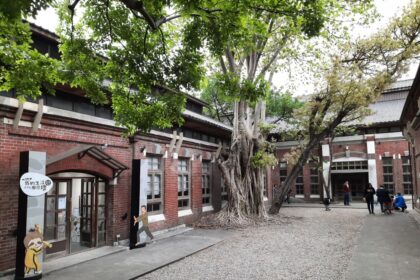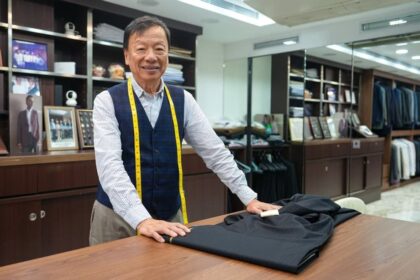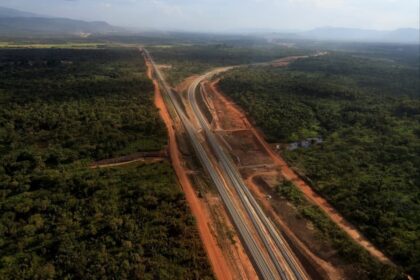A record day for clicks, a long week for couriers
Singapore’s 11.11 shopping rush delivered a jolt of demand that even seasoned ecommerce teams felt. In the first 30 minutes of the campaign, Shopee recorded more than S$11 million spent, with shoppers placing larger, more considered baskets than last year. Big ticket electronics, household appliances and beauty items led the charge. Livestreams and short videos turned attention into instant sales, including a single live event that cleared more than S$700,000 in orders. Rival Lazada reported higher spending as well, with average order amounts more than quadrupling and sales jumping as much as 24 times in the first four hours. Across Southeast Asia, electronics, fashion and beauty topped wish lists, and total sales outpaced a September campaign by more than 40 percent.
- A record day for clicks, a long week for couriers
- Where the bottlenecks appeared
- How companies adapted in real time
- New partnerships to expand capacity
- Customer experience, live commerce and the creator economy
- Sustainability pressures grow with every parcel
- What Singles Day signals about the regional economy
- December campaigns are already queuing up
- Key Points
The torrent of checkouts speaks to the power of Singles Day, the 11.11 festival that has grown from a marketing idea into the world’s biggest shopping event. In Singapore it now anchors the year end retail calendar, often eclipsing Black Friday and Cyber Monday. Even during the 2020 recession, platforms in Singapore surpassed the previous year’s 11.11 numbers by mid afternoon. The event has continued to evolve with livestreamed storefronts, creator led promotions and steep bundle deals. Those features excite shoppers. They also load stress onto delivery networks that must collect, sort and route a month’s worth of volume in days.
Where the bottlenecks appeared
Couriers reported an immediate spike once the discounts went live. Ninja Van said parcel counts doubled compared with quieter periods, and its cold chain service moved more than triple the usual volume as grocers and specialty sellers shipped perishables. Drivers were dropping multiple packages at single addresses as apartment blocks and offices became daily delivery stops. FedEx Singapore, which typically sees about a 20 percent lift in the broader year end season, flagged the combined effect of 11.11 and holiday gifting on air capacity and ground operations.
Singapore’s role as a regional logistics hub magnifies the surge. Packages bound for the island state and for neighbors are staged through the same ports, airports and sorting facilities. During a compressed campaign window, there are only so many loading bays, belts and vans to go around. The last mile is the hardest mile, because the final leg requires dense routing across urban traffic, lift lobbies and security checkpoints. Cold chain adds another layer, with temperature controls and tighter delivery windows that limit consolidation.
Cold chain and perishables
The island’s appetite for fresh groceries, meal kits and specialty desserts has made chilled deliveries a fast growing slice of ecommerce. Cold chain parcels require reefer trucks, insulated totes and rapid handoffs to maintain temperature. A spike can tie up limited refrigerated bays and reduce route flexibility, since ice cream, seafood or vaccines cannot sit while a driver clears a tower’s loading dock.
How companies adapted in real time
To keep promises, delivery firms threw people and software at the problem. Sort centers extended shifts, added temporary workers and leaned on robotic arms to pick, singulate and place parcels faster. Route optimizers resequenced stops by traffic, lift availability and parcel size. Linehaul teams used automation for loading and unloading to squeeze more runs into the overnight window.
Technology is no longer a side project in Singapore logistics. Industry surveys show a majority of local organizations now prioritise AI adoption, helped by government investment programs that fund compute and applied research. During peak weeks, AI driven forecasting can predict where orders will land, then pre stage vans and staff. Real time visibility tools, including predictive shipment monitoring, alert managers to late flights or rainstorms, so they can trigger contingency routes.
Sustainability is part of the operations playbook. Singapore targets net zero emissions by 2050, and carriers are phasing in electric vans and charging infrastructure. Facilities are shifting to renewables where possible. One major regional hub now sources roughly 60 percent of its power from solar panels, trimming about 1,280 metric tons of carbon each year. Cleaner fleets and greener buildings help during peaks, since energy costs and emissions climb when sorters run around the clock.
New partnerships to expand capacity
Capacity also grows through alliances. Alibaba’s logistics arm, Cainiao Network, has teamed up with Grocery Logistics of Singapore, a supply chain unit of the FairPrice Group. The tie up taps GLS strengths in warehousing, ecommerce fulfillment, cold chain and returns, including the ability to handle bulky items that do not fit standard parcel shelves.
In the first phase, shoppers on Taobao and Tmall get a full suite of services in Singapore, from customs clearance to last mile delivery. Next, the partners plan to open customs capabilities to merchants outside the Alibaba ecosystem. Cainiao expects to lift daily parcel handling in Singapore to around 42 tons, or about 600 bulky items, with most deliveries made within two working days after customs clearance. The deal mirrors a trend toward shared networks that can flex for peak months without every company building its own infrastructure.
Customer experience, live commerce and the creator economy
Platforms are smoothing the front end to reduce back end friction. Lazada has rolled out AI agents that help shoppers search, compare, and resolve refund requests more quickly. Faster answers reduce abandoned carts and post purchase queries, which lowers the load on call centers during peak periods. Shopee leaned into short video and live events, a format that converts attention into orders by mixing entertainment with limited time deals.
Creator driven commerce is being bankrolled at scale. Lazada has committed around 100 million dollars a year to its affiliate program in Southeast Asia. The initiative expands commissions, rewards and tools for influencers, micro creators and everyday shoppers who recommend products. For brands, this pushes performance marketing closer to the point of sale, while the platform uses data to steer high converting traffic to reliable sellers with strong fulfillment ratings.
Sustainability pressures grow with every parcel
The surge also revives a conversation about waste. Each checkout sets off a trail of packaging, transport emissions and returns. In Singapore, most waste is incinerated before going to landfill, and the current site faces capacity limits within the next decade. The government’s Green Plan calls for a cut in the amount of waste sent to landfill per person by 30 percent by 2030. Without better packaging design and smarter returns, fast sale cycles push in the wrong direction.
Logistics players are responding with circular practices. Electric vans and route planning reduce fuel burn. Facilities add rooftop solar and energy efficient systems. Reverse logistics programs aim to recover value from returns by refurbishing or recycling products and packing materials. Reusable mailers and pouches for repeat shippers can shrink waste at scale. These steps are early, but they move the sector toward a model where peak sales do not automatically mean peak emissions.
What Singles Day signals about the regional economy
Singles Day has become a barometer for consumer appetite across Asia. Estimates put spending across major Chinese platforms in the hundreds of billions of dollars in 2024, and China’s courier networks sorted more than a billion parcels within a single day. Those flows ripple through cross border finance and logistics, drawing investment into the rails of commerce, from multi currency payments to bonded warehouses.
Singapore’s draw as a neutral, well regulated hub places it at the center of those flows. Global carriers and regional champions alike run major operations here. J and T Express, which moves tens of millions of parcels daily across markets, is one example of a network built to ride the ecommerce curve. As air cargo infrastructure expands, including future capacity at Changi and a second Airport Logistics Park, operators expect more room to absorb peak months, with smarter automation to make each square meter work harder.
December campaigns are already queuing up
With 11.11 receipts tallied, teams are pivoting to 12.12 and Christmas. Sellers revisit forecasts, rebuild safety stock and refresh bundles. Platforms test promotions, creatives and affiliate lineups. Couriers lock in overtime rosters and allocate vans by neighborhood heat maps. Lessons from November shape December, because each missed promise now risks a social media complaint and a lost customer.
For shoppers, patience and planning help. Choosing consolidated shipping, selecting delivery windows and avoiding unnecessary returns lighten the load on networks. For merchants, small steps like accurate product weights, clear addresses and realistic cutoffs can be the difference between a smooth holiday run and a backlog. The size of this year’s 11.11 shows demand is not the problem. Getting the parcel to the door is the hard part.
Key Points
- Shopee clocked more than S$11 million in the first 30 minutes, with bigger baskets and strong demand for electronics, appliances and beauty.
- Lazada saw average order amounts more than quadruple and sales up to 24 times in the first four hours.
- Ninja Van handled roughly double its usual volume, with cold chain traffic more than tripling.
- FedEx typically records around a 20 percent lift in volume in the year end season, compounded by 11.11 activity.
- Couriers scaled manpower, robotic sorting, route optimization and automated loading to maintain promised delivery times.
- Singapore’s hub role magnifies peaks, with last mile density and cold chain limits creating pressure points.
- Cainiao partnered with GLS to boost capacity for Taobao and Tmall orders in Singapore, targeting around 42 tons daily and faster bulky item delivery.
- Platforms deployed AI agents and funded creator programs, including a 100 million dollar annual affiliate investment.
- Sustainability measures, from electric vans to solar powered facilities and reverse logistics, are expanding to curb peak season emissions and waste.
- Teams are already preparing for 12.12 and Christmas with inventory, staffing and routing plans shaped by 11.11 lessons.












